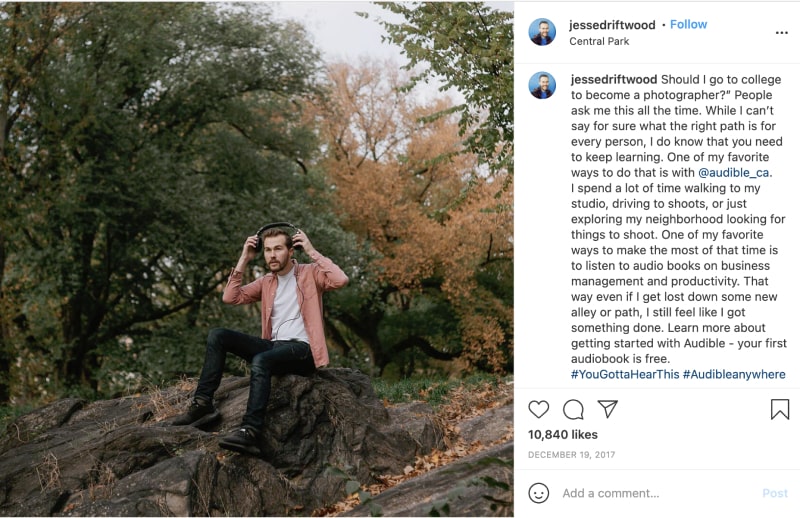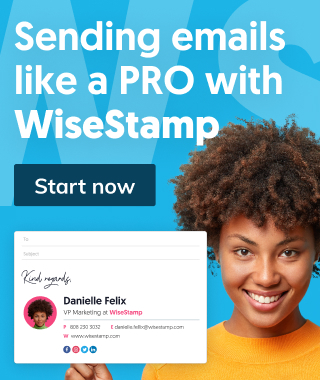Business storytelling marketing: 4 winning examples & analysis
Learn the art of storytelling content writing for business by looking at examples that made winning B2B brands. Read on to build your brand with storytelling marketing.

The best way to connect with your audience is to hook them in with a good story. When storytelling is applied to digital marketing, it becomes a lot easier for customers to engage with a brand. However, unlike telling a story in a movie or a book, storytelling for businesses has its own set of rules.
Here, we’ll take an in-depth look at storytelling marketing, what it is, what you gain by using it, how to create a story for your brand, and see some examples of good business storytelling.
What is storytelling marketing?
Storytelling marketing is a way for your business to get its message and values across by setting it within a narrative. Stories are the way we perceive and remember our lives. Storytelling gives your brand character, appeal, and relatability that facts and stats simply can’t.
Good business storytelling could make your brand relatable, memorable, and even inspiring. See, stories make people care. And whether it’s a brand, a product, or your person, customers will view your company differently. Not only that, but storytelling marketing will stay with your audience a lot longer than other types of marketing because a good story is more likely to stick with people.

Why is storytelling in business important for your business?
By nature, stories are engaging to audiences, so when you adopt business storytelling, it’s a lot easier to hook people in and share your message. In general, stories are highly memorable, engaging, and inspiring. Any business or product that succeeds to have this effect on its audience will grow fast.
Why businesses should use stories in their marketing:
- Stories are more memorable. If you’re throwing a bunch of data and numbers at your audience to try and convince them that your brand is worth it, they’re a lot less likely to convert. However, by adapting that data into a story format where your audience is emotionally invested in the plot or characters, suddenly your messaging becomes a lot more memorable.
- Stories are more engaging. Studies have shown that visuals are processed faster than text. When you show your audience a story in the form of images or a video, it’s easier for them to identify and get invested in it. It’s a lot easier for the brain to remember stories than it is numbers or facts.
- Stories inspire human connection. You might think purchase decisions are made based on logic or facts, but that’s not always true. Many consumers are influenced by emotion when they decide to buy an item or service. Storytelling allows you to pack in a lot more emotion as compared to other marketing techniques, which can lead to your audience feeling inspired and even connected to your brand.

Benefits of content marketing storytelling
92% of consumers prefer ads that feel like a story. Considering this, it makes sense to invest time and effort into storytelling marketing. There are a number of benefits to employing storytelling in your ad campaigns as a business:
- Makes your brand seem more human and relatable
- Can make your content more cohesive, especially if each piece of content follows the same story
- Inspires people to feel more connected among different demographics
- Becomes easier to create and share your brand’s identity and vision
- Forges deeper and more authentic connections with your audience and customers
- Promotes word-of-mouth marketing by making people feel more connected and loyal to your brand
- Helps establish trust between your customers and your brand

The brand storytelling process
Crafting a story for your business has its similarities to classic story creation. Storytelling is an art, however, there are still some specific things that you need to consider when you craft a story for a business. Let’s take a look at the overall process of creating a story for your brand.
1. Know your audience
Before you even get into the story planning process, you need to have a firm understanding of who your audience is. This is crucial because not every story is going to be effective with every person, so by conducting market research and narrowing down your target market, you’ll be better able to create a story that is engaging.

A good place to start is by creating a buyer persona. This will allow you to form your story around a specific audience and it will help you focus your message. You might be able to use the same story for different audiences, but how you present it, including where you distribute your ad, should be tailored to your audience’s specific interests.
2. Choose the right platform
Once you know more about your target market, you’ll have a better understanding of which mediums they interact with the most. Your ad doesn’t have to be a traditional commercial, it can be adapted to multiple platforms. Here are a few different ways to use each type of platform.
- Visual stories: a story can be presented in a single image, or in a marketing video. For visual storytelling, brands often rely on videos or even interactive games to convey their message.
- Written stories: written stories may seem more traditional, but you don’t need to write a novel to get your message across. Blog posts or articles are a straightforward way to tell your story in more detail.
- Audio stories: podcasts have risen in popularity over the last few years, and brands are jumping in on the trend. Consumers appreciate the rawness and unedited nature of stories told orally, such as in podcasts or in live events.
3. Create a strong CTA
This is another step that should come before you start creating your story content. By choosing a strong CTA from the beginning, you’ll be able to focus your story towards an ultimate goal.
Think about what you’re trying to accomplish with your story and ad. Is it brand awareness? Are you trying to promote a new product? Do you want to generate more sales or boost your conversion rate? Your ultimate goal will allow you to define a good CTA and ultimately create a story that works for your business.
Unlike with other forms of digital marketing where you have a clear CTA such as “register to our newsletter,” or “complete your purchase,” with storytelling you need to be a little more discreet. You don’t want your ad to come off too pushy, so you want the CTA to seem natural at the end of your story. The entire story should be driving towards the CTA in a way that your audience might even be able to expect what the outcome might be from the start.
4. Outline your hero’s journey
Now’s the fun part of creating your story. There are a few elements to this step of story creation. First things first, you need to choose a character who’s relatable. This character is going to be at the center of your story, so it’s important to devote some time to create them, such as their characteristics, backstory, flaws, and more. Even if your character is only appearing in a short 30-second video ad, having this extra information will help you craft a character that your audience relates to and likes.
Next, you need to outline the journey your main character, or hero goes on. Essentially, when creating a story for a brand, your journey doesn’t have to be too long, but it does need to have some identifiable features. For example, you might base your hero off of your buyer’s persona or what you learned about your target market. Then, you can create a storyline where your hero faces a problem, similar to your target market’s pain points, and then uses your service or products to overcome this obstacle.
What this does is allows your audience to picture themselves in the hero’s shoes. With a strong character outline and a well-thought-out journey, your customers will begin to identify with the problems the heroes face and consider your company for a solution to their own problems.

5. Define the conflict
While this is part of crafting your hero’s journey, it’s an important step that deserves a little extra consideration. No good story comes without conflict. Think of Harry Potter without Voldemort. It just doesn’t work. Your conflict is where your story comes to life and your audience is most engaged.
Consider your hero’s goals and motivation, then, try to understand what stands in the way of them achieving their goal. Showing how your hero fails also helps to make them more relatable, and paves the way to a conflict resolution where the obstacle is overcome. Naturally, by the end of your story when the conflict is resolved, it was your brand that allowed the hero to succeed.
Examples of good content marketing storytelling
In order to better understand how storytelling works in marketing and in ads, it’s helpful to take a look at some examples. These companies were successful in using a story to convey their message and engage their audiences.
1. Land Rover: storytelling digital marketing

Instead of creating their own story from scratch, Land Rover took a customer story and used it to promote its brand. For their 70th anniversary, Land Rover told the story of “The Land of Land Rovers” in a remote village in the Himalayas. As a marketing strategy, Land Rover does a good job of telling the story of its brand through the eyes of its customers.
Not everyone can relate to living in a remote village in India, but Land Rover owners around the world will identify with the villagers’ reasons for using Land Rovers. More than that, this story works to connect people of different backgrounds and shows that Land Rover has a good understanding of its audience and their interests.
2. Airbnb: storytelling company

Airbnb manages to pack a lot of punch in this minute-long ad. We are introduced to a hero and we see her journey throughout the ad. Her problem is introduced from the beginning when she claims “I always imagined there was just one Paris.” Then, the audience is taken on a ride through her multiple experiences in the city.
The story Airbnb tells here is one of human connection, so it’s likely to appeal to a wide audience. The company also employs a good CTA at the end, “stay in over a million homes around the world.” The CTA isn’t too pushy and it clearly fits with the rest of the story.
3. Audible: storytelling with influencer marketing

Stories don’t always need to be told over traditional ads or videos. Audible uses storytelling influencer marketing to showcase their brand and a customer’s specific story. By combining a striking image with a relatable caption, users on Instagram are drawn into a story about the poster’s journey and struggle of whether or not he should go to college to study photography.
By having this post on the user’s page rather than the company’s, the content seems less like an ad and more like a relatable story. Many brands work with influencers these days for their unique talents in captivating an audience and telling a story. Here, audible does it just right.
4. Dove: storytelling product marketing

A few years ago, Dove released a campaign for Father’s Day where it wanted to reunite service members with their families. The ad they released tells the story of one family that’s been separated for 7 months. This is established as the problem early on, and then we’re introduced to the characters in the story, which again, are real people. This is another good example of using your existing customers to strengthen your brand.
However, unlike some other ads, this one isn’t exactly pushing a specific Dove product. Instead, what it’s doing is creating brand awareness and trustworthiness. After seeing this video, which is relatable to almost anyone, audiences are more likely to think of Dove as a reliable brand that cares about family values.
How to start doing business storytelling
It’s important to note that the best way to tell great business storytelling is to just start doing it on a regular basis. Storytelling is a skill that needs to be honed and a company culture that needs to be cultivated. Naturally, these take time, so starting early will get you where you wanna be sooner. That said, there are hefty tools you can use to get you there faster. For getting inspiration and writing faster you can use AI writing aids like Rytr, Jasper, or the free Hemingway editor. For creating visual storytelling materials for your new startup or product line you can use this amazing pitch deck creator by Storydoc (we use them for our sales decks). And for video storytelling, a great option is Animoto, which is relatively easy to start using and producing content even for beginners.
Final Word
There are countless different stories waiting to be told. You can tap into your network and your customer base to tell stories about real people, showcase your client’s journeys on social media, or even make up stories with strong characters.
When it comes to storytelling marketing, the options are nearly endless. What’s most important is understanding your audience, choosing the best storytelling medium, and then crafting a compelling ad that will resonate with viewers.


